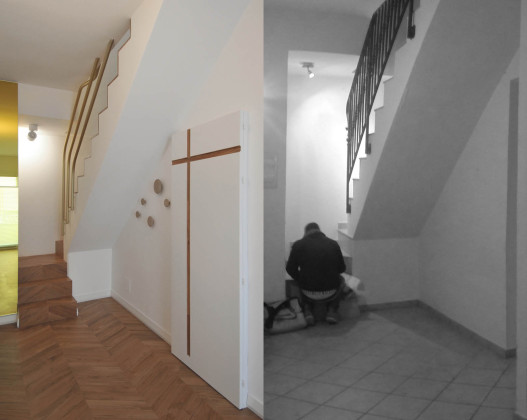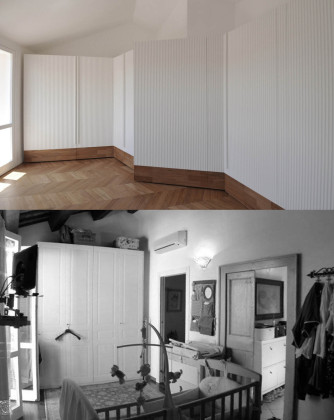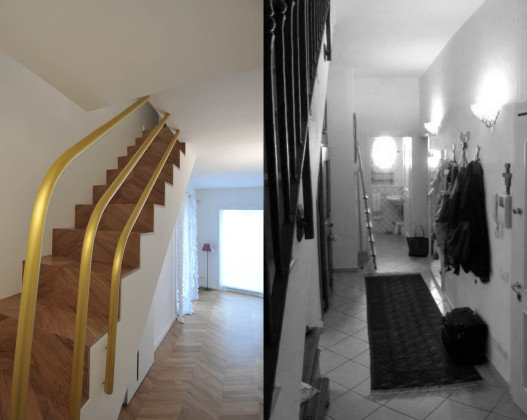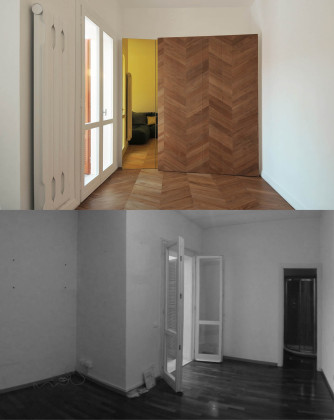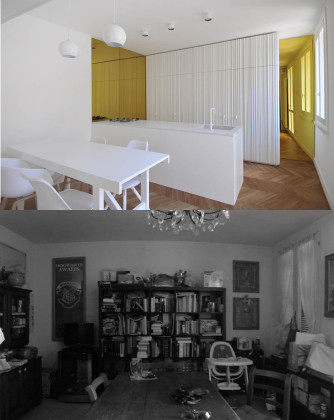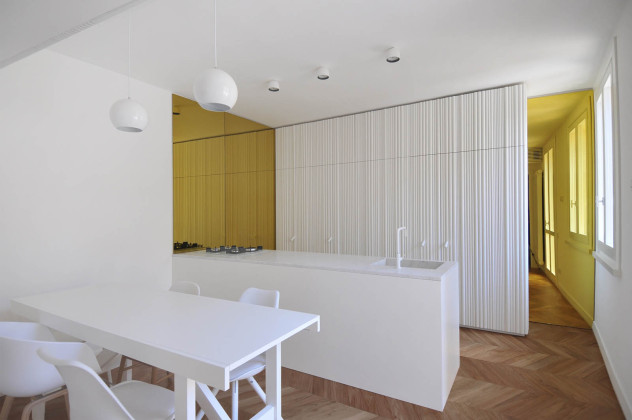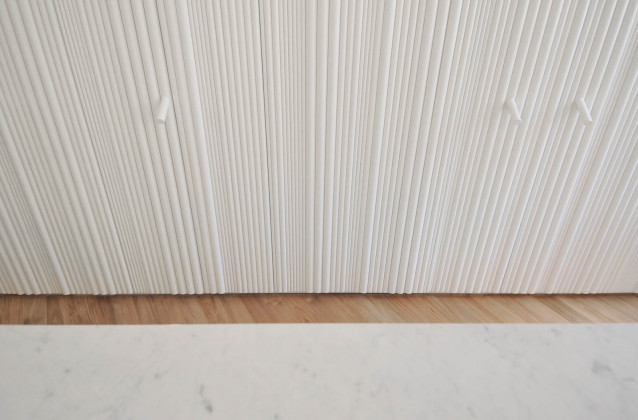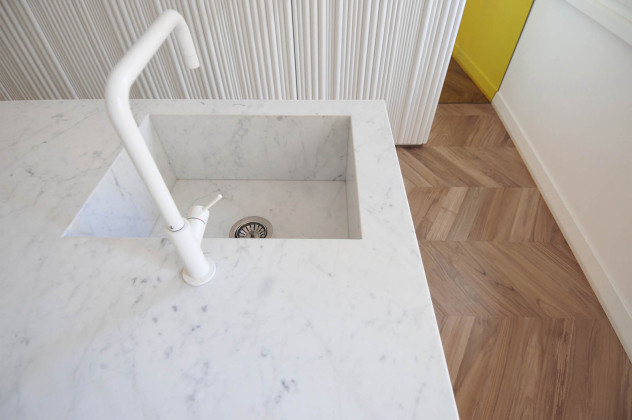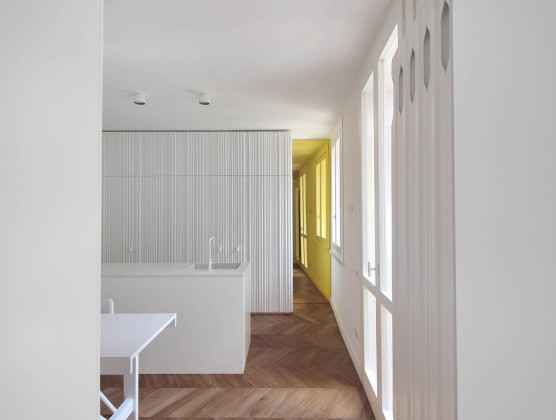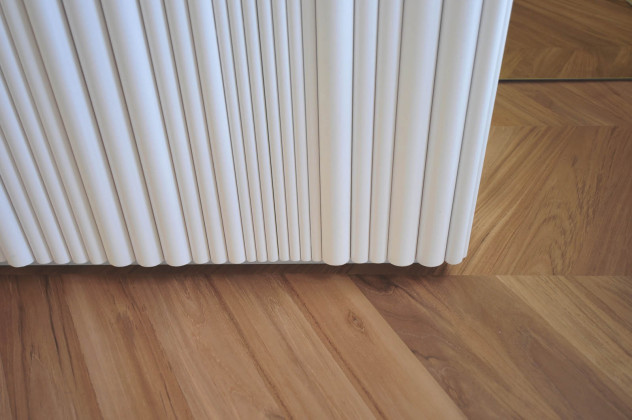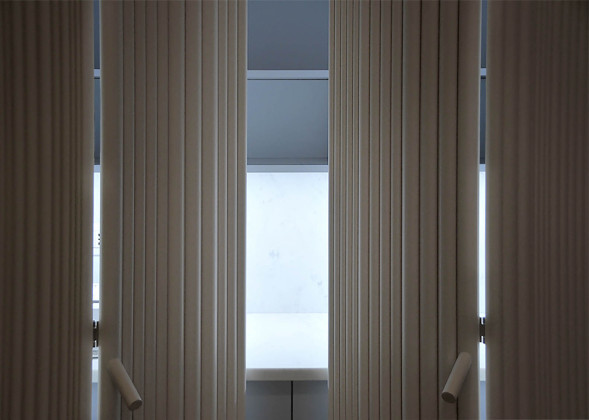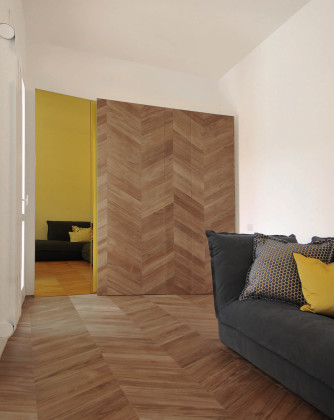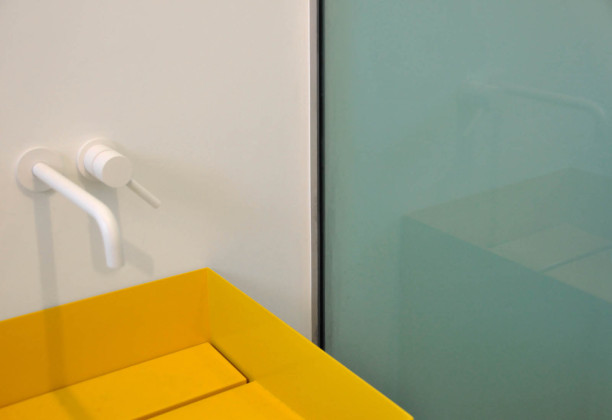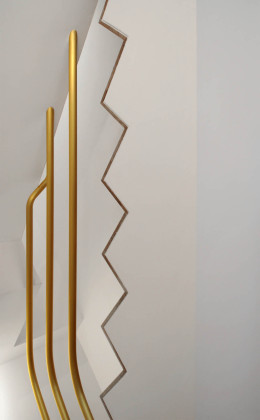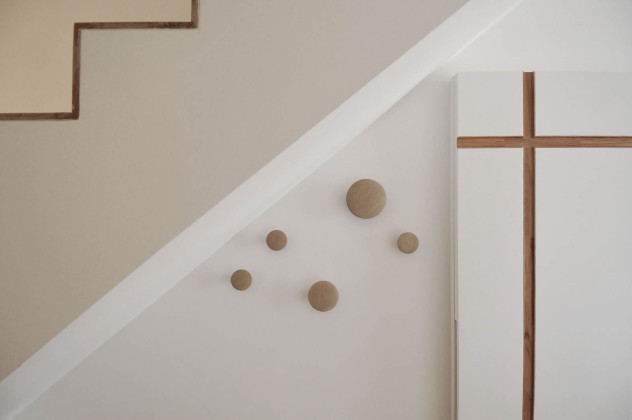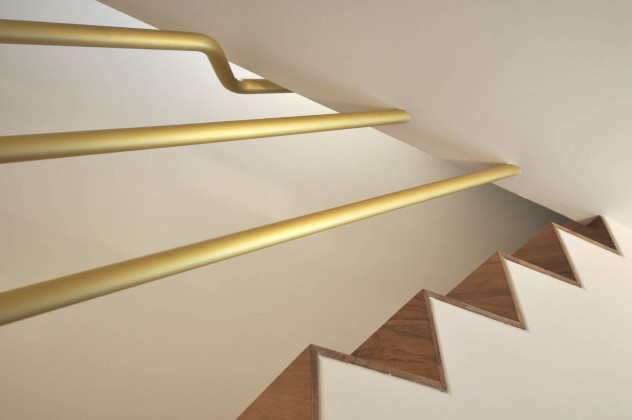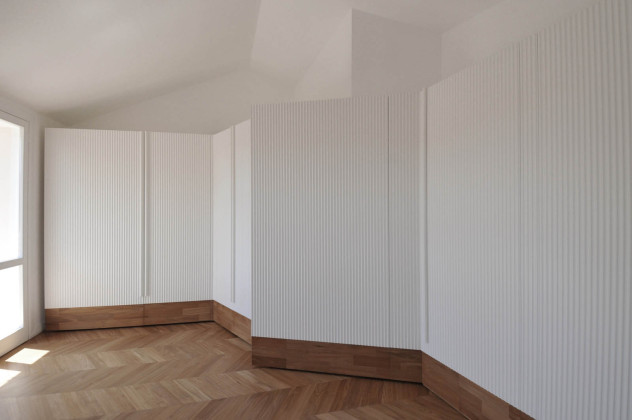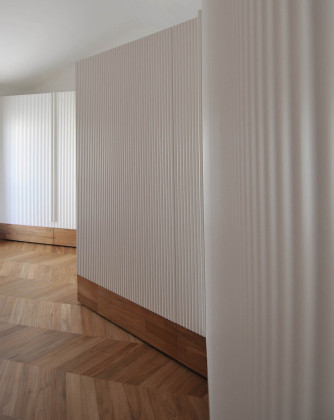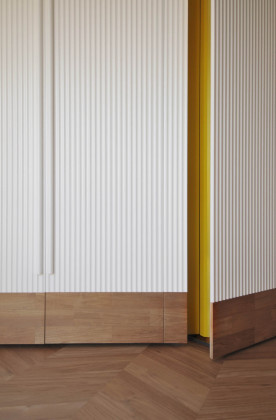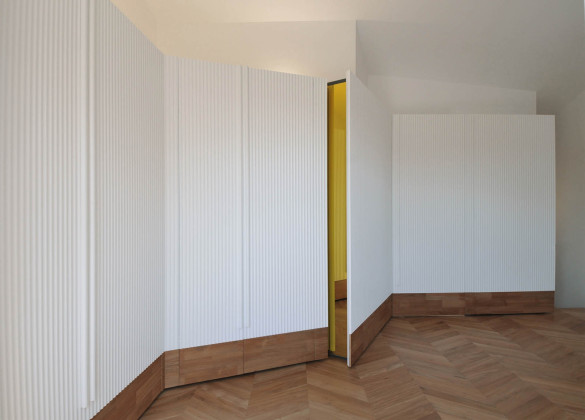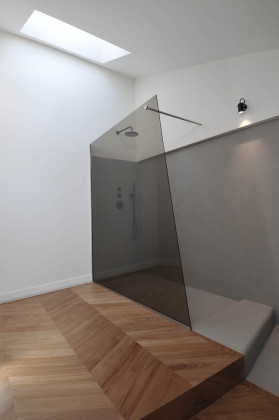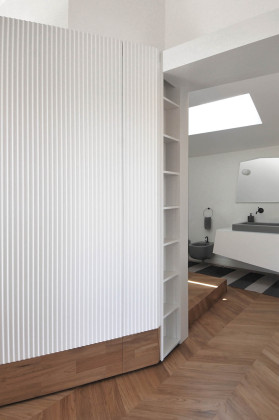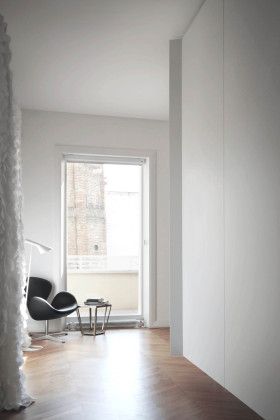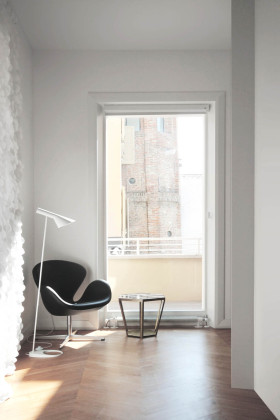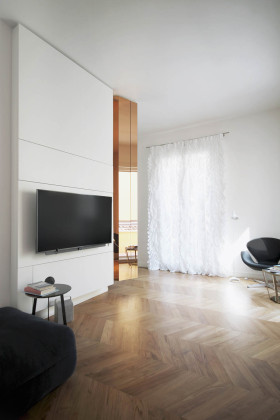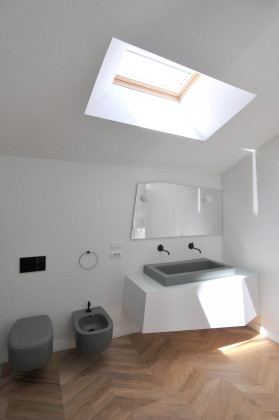CDR
Renovated by tissellistudio, the single family apartment is located in Cesena, Italy. The office describes the project as follows:
The flat is located in the heart of Cesena historical centre (Italy), a privileged position which allows the visual contemplation of an outstanding urban and natural landscape.
The house abandonment and degradation in the preparatory phase was accompanied by the interiors fragmentation and claustrophobic organization, which definitively vanished the place strong potentiality.
The non-structural partitions were demolished to permit the overall reduction of rooms, benefiting from their extension in size and comfort, as well as the discovered fluidity in their sequence. These widened spaces also obtained an increased amount of air and natural light thanks to the redefinition of the external openings, all of them facing the building courtyard or leading to the house terraces of the two floors. At the entrance level of the renewed apartment are the kitchen/dining room, the living room and a bathroom used by the guests. The stairs, whose structure was recovered although the renewed finishes, leads to the upper floor where the bedroom, a private bathroom and a technical room complete the functional program required by the client.
The overall space takes advantage from the rooms natural succession thanks to the decisive reduction in the doors and corridors number, a fact that was also made possible by the existent house morphology. The teak floor newly installed in chevron pattern, together with the white paint used for walls and ceilings, homogenizes the lower and upper level, giving them continuity. Even the terraces are covered with teak, although in a more linear texture and after the due treatments for the external use. The decks became in this way a privileged extension of the interior space.
The never banal use of furnishment starts considering it not as the sum of added objects, which simply might occupy space kept free. On the contrary, if we consider it as a complementary component of the architectural design, which presuppose a certain permanence in time and requires a project brought to the detail, its potentialities unexpectedly amplify.
Under this point of view the furniture which concludes the main rooms was viewed as independent but integrated in the space and each of the piece unequivocally different even if related to the others. Their collocation at the “extremes” underline the single exceptions, a subtended mutual autonomy and the need for the punctual experimentation.
In all of the cases the texture, material, light, colour, and opening system are the principal component explored along the design phase.
The exposed surface, a steady background in the kitchen and in the living room, a more articulated envelope in the bedroom, reveals in its opening and decomposition secret rooms, spaces not-perceivable in advance, varying depths depending on the needs and constraints. The shutters rotate, slide, overlap according to the specific situation.
The external treatment adopted for all of the elements, entirely made in wooden structure, expresses the many possibilities offered by the same material when it goes trough different operations: in the kitchen wardrobe, cylinders of varying diameter made in lacquered wood are joined together following the panels module; in the living room is the same floor to bend on the vertical surface of the shutters, whereas in the bedroom is just the base for the wide white panels carved in a continuous lacquered fluting, a real counter-form of the dowels used in the kitchen.
 23.11.2023
23.11.2023



